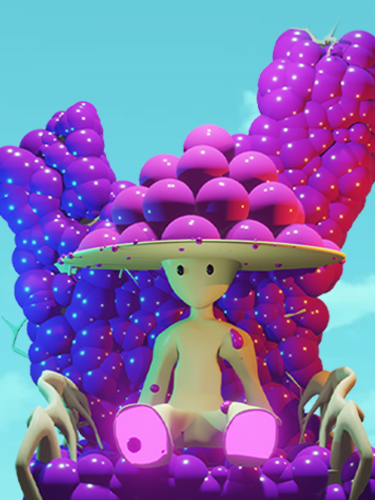The Way We See Things
3D Unity Project - Individual Project (Semester 01, KADK)
Cinematography is essential to building up a narrative and giving the audience an emotional experience. This project aims to create an interactive narrative experience where the player can shift from one virtual camera to the next, with each scene enhancing the experience felt by the player. This will be accomplished by using the rules of camera composition and techniques defined by the film production pipeline. A study on colour schemes and symbols in scene composition will add to enhancing the emotions in the narrative.
Arriving at the Narrative
“What are the Aesthetics (“Emotions”) in your Game?
I want to make a game that makes the player feel … “
The project started with answering these questions, which are a reference to the Game Prototyping Workshop from week one of the semester.
Curiosity, Suspense, and Surprise (Described as the Kinder™ Egg effect by Mueck (2022)).
Location, Genre, Characters
The storyline for the project was developed using techniques from the Storyworld building workshop by Michael Valeur. An Idea Wheel with a list of locations, genres, and character connections that added to the emotions selected was made and chosen at random.
Location – Empty Diner
Genre – Thriller
Character connections – Family
The Story
"The scene begins at a diner where everything seems normal. As you take in the half-eaten plates of food at your table, you realize the place seems strangely empty. You suddenly notice the flash of headlights streaming in through the window and the scene shifts to the parking lot outside. You see a slight movement under the faint glow of the streetlights. Your attention shifts again as you hear a little whimper coming from under one of the tables. You find yourself looking down at a waiter cowering under it. Curious about the events happening at the diner, you hear a loud bang from the door leading to the kitchen. Feeling a little tense, you decide whether opening that door could lead you to danger. If you do, the scene cuts to a police car where all the pieces of the puzzle finally seem to click. And if you decide not to respond, the story ends and you are left with the disappointment of not knowing how it turns out. "
The contrast between the normality that you feel at the start and the increasing tension with each proceeding scene builds up the curiosity and the suspense in the player.
Storyboard
Breaking down the Visuals
Colours, Colour schemes, and Colour symbolisms
Blue - Blue is seen as a sign of stability and reliability. However, it can also be perceived as cold, unemotional, and unfriendly.
Orange - Orange stands for danger; it’s used to indicate areas where we need to exercise caution.
Analogous colour scheme - creates a kind of visual unity. The idea here is to create a sense of calm at the beginning using different shades of blue, which would later evolve to more cold, unfriendly shades as the scenes progress.
Complimentary colour scheme - to create a visual ‘life’ in the frame. Dueling colours are often associated with internal or external conflict.
Discordance colour symbolism - The recurring and progressive use of orange defines this symbolism in the scenes.
Transitional color symbolism - a change in colours and colour palette to indicates a shift from the warmer colour tones to the colder tones back to the warm tone at the end of the scene.
Camera Angles and Shots
Camera Shot - Point-of-view (POV) - Starting the scene with this shot allows the player to immediately put themselves in the protagonist's position and assess the diner's atmosphere through their eyes.
Camera Shot - Static shot + Long shot - Draws the player’s attention to the very subtle movement seen in the dim lights of the parking lot. It is intended to arouse the player's initial sense of intrigue and uncertainty.
Camera Angle – High angle + Dutch Angle – The situation becomes more tense when the player is lording over the cowering waiter, specifically in the dutch angle, which raises the question of what role the player is taking on in the story.
Camera shot – Over the Shoulder (OTS) - The dilemma the player must resolve in order to decide whether to open the door is highlighted by this shot. It is between the player's character and the person behind the door, who might or might not be a danger to them.
Camera shot – Close-up shot - The transitional change in the colour scheme and the close-up shot focuses on the story's final piece of the puzzle.





